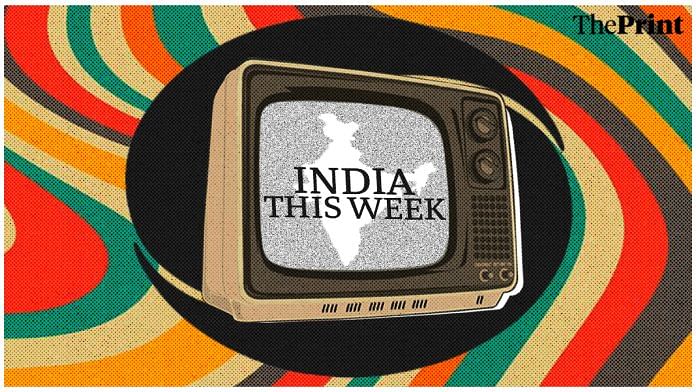Years before television news channels jostled for TRPs and news programmes turned into battlefields, simple yet powerful analysis and round-ups enjoyed supreme viewership on Indian television. Government broadcaster Doordarshan, which held a monopoly over all programmes, including presentation of the day’s news, gradually started offering a host of viewer-friendly informative bulletins around the end of 1980s and early 1990s.
Akhila Sivadas, executive director of Centre for Advocacy and Research, pointed out that there was a sense that programmes projecting an ‘emerging India’ were needed, and this sort of defined what Doordarshan commissioned thereafter. “That was how India This Week — a news magazine projecting an emerging India was conceptualised,” she recalled. “There was a sense that broadcasting had to be sensitive to the ‘changing’ India and project its diversity,” Sivadas added.
India This Week was initially conceptualised along the lines of the widely popular World This Week, presented by Prannoy Roy (NDTV’s co-founder). But the show over the years covered both news and entertainment, in a style similar to a weekly magazine.
Also read: Doordarshan’s Rajani fought power & corruption, showed Indian women all battles can be won
Produced and hosted by Ramesh Sharma, the programme, which was launched in 1994, aired on Saturdays at 8 pm – considered prime-time in those days – on DD Metro. The 30-minute programme had three segments – political, business and entertainment, Sharma said.
In the initial days, India This Week was designed to show a ‘new India’ to an international audience. “It was a huge success with great viewership in countries like the US, Canada and several West Asian and European countries… The idea was to showcase India’s vibrancy and robust democracy in all its forms,” Sharma said, noting that economic liberalisation in the country had just been kicked off in 1991.
Nilendu Sen, who was one of the prominent members of the India This Week team, said: “It was a vehicle to take forward the image of the country — to show our country as vibrant, open, free, which is democratic and secular. Remember this was just after the demolition of the Babri Masjid (in 1992)”.
India This Week was not limited to the idiot box. National domestic carrier Air India started using its bulletins as in-flight entertainment programmes. “The idea was to present India in a new light and also capture the huge economic changes,” Sharma said.
Some of the major business news that India This Week covered in the initial years included participation of the Indian delegation in Davos and the entry of Korean car maker Hyundai Motors in India. In one of the first episodes, the programme carried a report on the displaced people of Jammu. An in-depth coverage of the Kumbh Mela was also well-received.
India This Week also provided a “great learning ground” for many young journalists and, in many ways, marked the advent of the new-age journalism, which is driven by technology. Sharma’s camera person was none other than film producer and director Kabir Khan of the Bajrangi Bhaijaan fame.
By 2000, India This Week became a sponsored programme instead of a commissioned one — this meant that Sharma had to scout for advertisers. The response was good until about 2004. By then, the dynamics of television programming had changed, recalled Sen and Sharma. Satellite news channels had mushroomed. Sharma’s India This Week couldn’t survive the intense competition and poaching, and it was finally taken off air.
Also read: Newstrack – The video magazine that served real issues to news-hungry Indians in DD era



